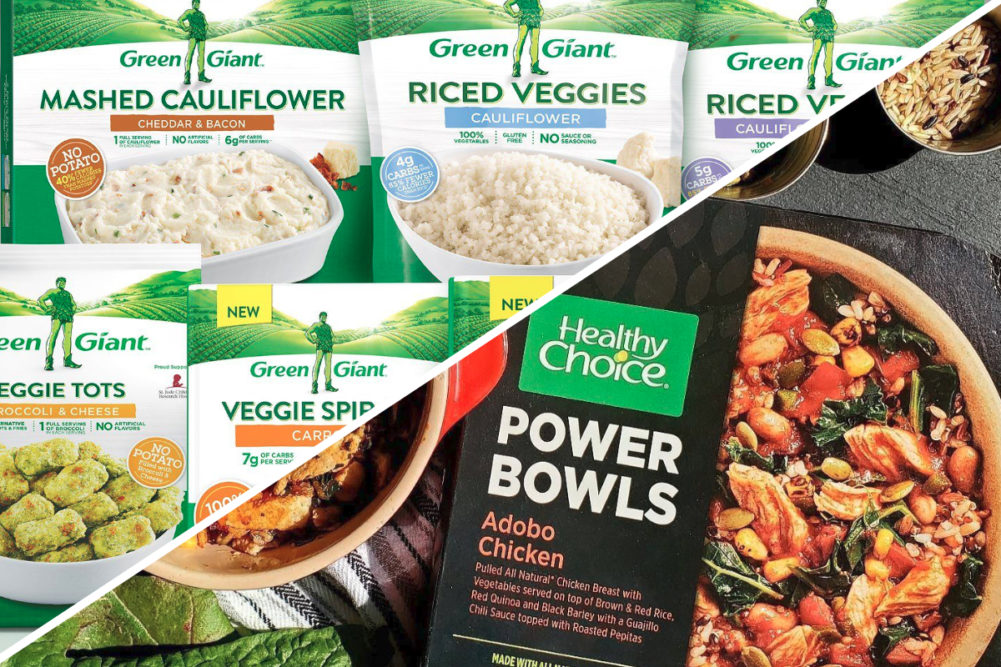NEW YORK — Credit Suisse on Jan. 5 lowered its ratings for B&G Foods, Inc. and Conagra Brands to “underperform” while also lowering its target price for both packaged foods companies.
Robert Moskow, research analyst at Credit Suisse, noted in a Jan. 5 research report that the target price for Parsippany, NJ-based B&G Foods was lowered to $25 from $28, reflecting the rating agency’s belief that B&G Foods’ portfolio is likely to experience major sales declines once consumers return to pre-pandemic eating patterns.
“B&G’s brands have performed extraordinarily well during the pandemic because so many of them are used for preparing meals at home,” Mr. Moskow said. “Forty percent of sales come from meal components (vegetables, beans and taco shells), 30% from enhancers (e.g. salsa, spices and pasta sauce) and 15% from baking on a pro forma basis.”
In addition, Mr. Moskow said the recent acquisition of the Crisco oils and shortening brand from J.M. Smucker Co. increases B&G’s exposure to “normalcy” even further because Crisco was declining at a 5% rate prior to the pandemic due to stagnant baking trends and consumers shifting to healthier options.
“In total, we expect an organic sales decline of 8% in 2021 and 3% in 2022 as consumers gain access to vaccines and return to normal mobility,” he said.
Another challenge facing B&G Foods will be its ability to retain millennials, Mr. Moskow said. While B&G Foods’ management is optimistic that millennial consumers will remain loyal to its brands, Credit Suisse is less so, saying it will be “a hard task” given B&G Foods’ lack of marketing efforts to reach the demographic.
“B&G is not a marketing company; its strategy is to buy well-established staple brands that can maintain sales and cash flow without needing significant reinvestment or overhead costs,” Mr. Moskow said, adding that B&G Foods’ advertising as a percent of sales is only 0.5% compared to an average of 3.7% for food peers. The company also lags its peers when it comes to establishing an e-commerce presence, he said.
Meanwhile, Mr. Moskow said Credit Suisse has lowered its target price for Chicago-based Conagra Brands to $34 from $38 and its fiscal year 2022 earnings-per-share estimate to $2.45 from $2.61.
Mr. Moskow acknowledged the ability of Conagra’s management to execute an impressive business turnaround and cultural transformation in recent years, including increasing its scale in the on-trend frozen category, launching compelling product innovation, and introducing strong marketing and financial discipline. Even so, he said the company is likely set up for disappointment in fiscal 2022 “because of its overly optimistic view regarding the sustainability of above-normal at-home food consumption during the pandemic.”
As with B&G Foods, Mr. Moskow said the sales and earnings gains scored by Conagra during the pandemic are unlikely to continue as consumers return to prior meal preparation patterns.
“By our math, about 35% of Conagra’s growth in 2020 came from brands that were out of favor with consumers before the pandemic (e.g. Chef Boyardee, Hunts, Duncan Hines) and declining at a 2% annual rate or more,” he said. “EPS is probably 12% to 13% higher than where it would have been if not for the pandemic.”
Conagra’s management has set an EPS target of $2.66 to $2.76, a level that Mr. Moskow said may create incentive to limit investment.
“Unlike its annual incentive plan, the company’s three-year, long-term incentive plan focuses the executive team exclusively on EPS despite the fact that investors place more value on sales growth,” he said. “In our view, this provides management with an unusually strong incentive to maintain its earnings base through cost-cutting as pandemic-fueled sales gains inevitably unwind. If the company grows its earnings while its sales are declining, we believe the stocks’ valuation multiple will compress.”
Mr. Moskow said Conagra’s modern approach to brand building also increases its risk profile. Specifically, he pointed to the company’s strategy to shift marketing dollars away from traditional advertising and into retailers’ slotting fees and marketing programs.
“It is hard to share management’s conviction that its brands will retain consumers who tried them during the pandemic when advertising is declining,” he said.





